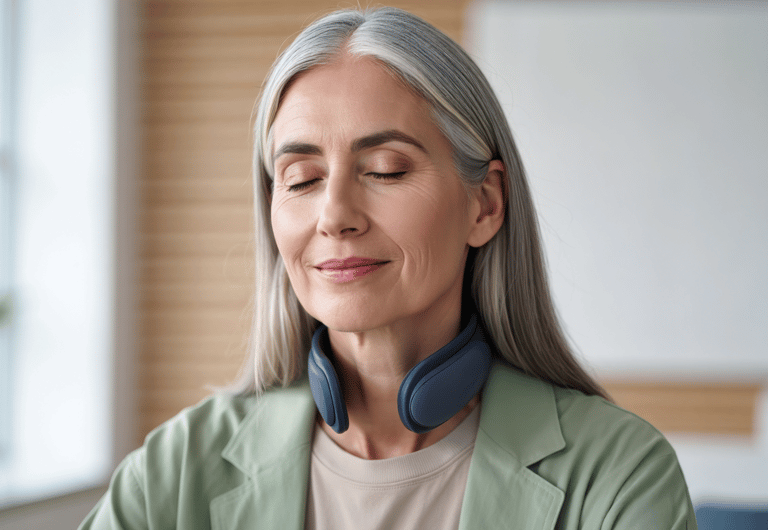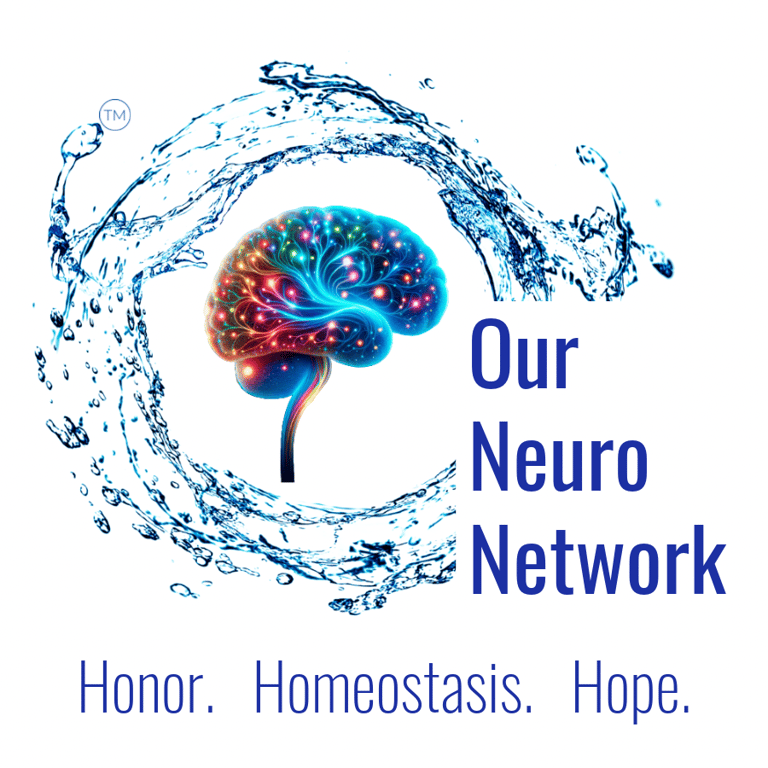Recent Evidence in Vagus Nerve Stimulation in Migraine and Trigeminal Autonomic Cephalalgias
10/7/20252 min read


A Renewed Look at NeuromodulationVagus nerve stimulation (VNS) has evolved over the past decade from a niche experimental therapy into a promising adjunct for headache medicine. Two new publications in Cephalalgia—the official journal of the International Headache Society—offer valuable updates on both clinical outcomes and mechanistic understanding of how this therapy may benefit people living with migraine and trigeminal autonomic cephalalgias (TACs).
Real-World Outcomes: Long-Term Safety and Clinical Insights
Fernandes and colleagues (2025) presented an 11-year, single-center experience using non-invasive vagus nerve stimulation (nVNS) in a range of TACs, including cluster headache, hemicrania continua, and short-lasting unilateral neuralgiform headache attacks (SUNCT and SUNA).
Their findings demonstrated that:
nVNS was safe and well tolerated over long-term use.
It appeared to be more effective for prevention than for acute rescue.
Patients who adopted nVNS as part of a broader, integrated care plan often reported improved quality of life.
While these results are encouraging, the authors noted that their data were observational. Larger randomized controlled trials remain essential to determine consistent efficacy and refine treatment parameters.
Mechanistic Insight: How VNS May Interrupt Migraine Pathways
Liu and colleagues (2024) examined how VNS affects cortical spreading depression (CSD)—the electrical wave believed to initiate migraine aura and subsequent pain signaling. In a preclinical animal model, they found that VNS:
Inhibited CSD propagation in a dose-dependent manner.
Activated the nucleus tractus solitarius (NTS) in the brainstem, which then influenced the locus coeruleus and dorsal raphe nucleus, key centers for pain and autonomic modulation.
Reduced neuroinflammatory signaling and altered tropomyosin receptor kinase B (TrkB) activity, offering a mechanistic explanation for its preventive potential.
Together, these findings suggest that VNS may act upstream in the migraine cascade—stabilizing the neural and autonomic circuits that precede headache onset.
Clinical Integration: Where VNS Fits in 2025
Based on recent evidence, non-invasive VNS may:
Provide a preventive option for cluster headache and related TACs.
Serve as a non-pharmacologic adjunct for migraine prevention.
Fit naturally into a holistic autonomic regulation framework that includes lifestyle optimization, mindfulness, and breathwork.
At the same time, clinicians and patients should remain objective: controlled data are still limited, device costs vary, and individual responses can differ significantly.
Prime Day Perspective
It happens to be Amazon Prime Day, and several vendors are offering short-term discounts on VNS and transcutaneous VNS (tVNS) devices.
This post is not sponsored by, nor does it endorse, any specific product or company.
Consumers considering these devices should:
Research device types and clinical data (cervical versus auricular models).
Compare safety, intensity settings, and warranty information.
Consult a licensed healthcare provider before purchase or use.
A Personal Reflection
In my own experience, vagus nerve stimulation, combined with meditation and breath work, has been transformative in managing headache, migraine, facial pain, and related autonomic disorders. These modalities work synergistically—enhancing parasympathetic tone, improving recovery, and restoring a sense of agency in health and healing.
While not a cure, VNS can be a meaningful tool in a comprehensive self-care and clinical framework—embodying the spirit of Honor. Homeostasis. Hope.
References
Fernandes, R., et al. (2025). Neuromodulation in trigeminal autonomic cephalalgias: 11-year experience of non-invasive vagus nerve stimulation. Cephalalgia.
Liu, X., et al. (2024). Vagus nerve stimulation inhibits cortical spreading depression. Cephalalgia.
"We walk with you."
~Our Neuro Network
Contact
Subscribe to newsletter
E-mail: connect@ourneuronetwork.org
Telehealth Phone: 808-295-4021
Telehealth Fax: 808-666-9212
Coaching and Consulting Phone: 307-335-4968
Coaching and Consulting Fax: 307-312-3277
Medical and Legal Disclaimer: The information provided on this website is for educational and informational purposes only. It is not a substitute for professional medical advice, diagnosis, or treatment. Do not disregard or delay seeking medical care because of content you have read here.
Always consult your licensed healthcare provider or qualified medical team before making any healthcare decisions, starting or stopping medications, or implementing any lifestyle, nutritional, or therapeutic interventions.
Use of this site and its content is at your own discretion and risk. No patient-provider relationship is established by viewing or interacting with this website or its associated social media, podcasts, or communications. If you are experiencing a medical emergency, call 911 or go to your nearest emergency department.
While every effort is made to ensure accuracy and currency, Our Neuro Network and its affiliates make no representations or warranties of any kind, express or implied, regarding completeness, accuracy, reliability, suitability, or availability of any information, products, or services mentioned herein.
By using this website, you agree that Our Neuro Network, its owner(s), affiliates, and representatives are not liable for any direct or indirect damages or consequences arising from your use of this content.
© 2025 Our Neuro Network | All Rights Reserved | Privacy Policy | Terms of Use
Honor. Homeostasis. Hope.
